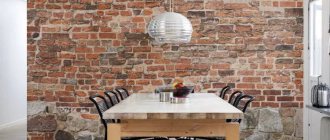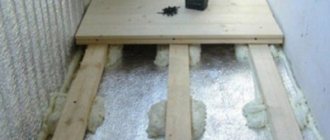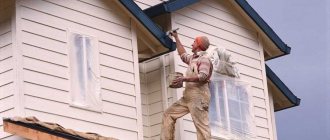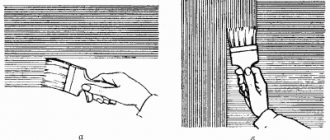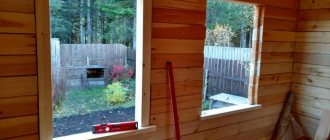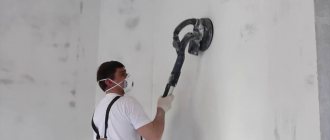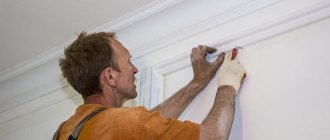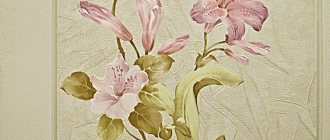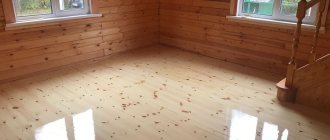Modern materials allow you to quickly finish the premises yourself, without resorting to the services of professionals. One of the cheapest and most practical ways is to use paint. With its help, you can paint a brick wall on the balcony, transforming it beyond recognition or, conversely, emphasizing the elegance of the masonry. To do this correctly and beautifully, you need to follow a number of recommendations.
Natural shade
Loft and ethnic interiors often involve brick walls in a natural shade.
Authentic, historical masonry gives the room a special charisma, allows you to play with textures and place accents. It is not worth leaving the wall completely in its original form. An untreated porous surface is more difficult to clean. Under the influence of negative factors, especially in the kitchen area, the masonry will begin to deteriorate faster. To preserve the terracotta shade, a pre-cleaned and dried surface must be coated with glossy or matte varnish. Many people use clinker oils. They will not only protect the brick from dirt, but will also give the wall a richer and richer color.
Features of using a white brick wall in the interior of an apartment
This is a universal decor that emphasizes other elements used in home decoration. A white brick wall is created from sand-lime brick, characterized by strict geometric dimensions and laconic form. On the front side do:
- Corrugation;
- Irregularities imitating natural stone;
- Gloss, it is formed during firing of the glaze.
Natural brick makes the room too heavy; instead, lighter materials are used to imitate masonry. In brick houses, natural masonry is freed.
Whitewashing brick
White brick is a primary attribute of the Scandinavian style, although in recent years it has gradually migrated to other directions. The finishing looks moderately restrained, textured and very atmospheric.
Whitewash can be quite dense or slightly transparent. In the first case, the wall is covered with interior paint in 2-3 layers, using a roller or wide brush. In the second, a solution consisting of a quarter of water is used.
Dyeing process
Regardless of the color and drying speed of the dye, it is necessary to cover all elements that cannot be painted, otherwise they can also be painted.
The surface temperature must be at least 25 o. The actual painting of the brick wall begins from the upper right corner, gradually moving horizontally downwards.
It is important to ensure that there are no unpainted areas or, conversely, surfaces with an excessively high level of paint.
It is necessary to paint in several layers, before each one waiting until the previous one has completely dried. For the first layer, it is advisable to dilute the paint. Before applying the next layer of paint, the surface must be examined for drips and cracks. They need to be cleaned and sealed.
The main thing is not to choose façade paint by mistake. Of course, such materials are better suited for painting porous surfaces, but they contain many volatile substances that are hazardous to health. You will need interior paints - you can choose acrylic or alkyd for a matte or semi-gloss effect. Or use oil paint - it will give the brickwork a soft shine.
The primer should be selected taking into account the choice of paint, but in any case it should penetrate deeply into the base and create a durable water-repellent film. Apply a thick layer of primer - and be sure to let it dry completely.
Painting with antique effect
You can create the feeling of old, partially faded brickwork in several ways:
- The diluted paint is applied using a sponge, varying the pressure in places.
- The space between the rows is densely filled with color, and the surface of the bricks is only slightly colored with the same shade, creating the effect of a faded wall.
- The paint is applied with light movements with a lightly padded brush, compacting in some places and barely touching in others.
The effect of light abrasion makes the masonry more expressive and looks stylish in combination with natural wood, stone, and metal.
Conditions for finishing work
To paint the outside of a house, it is important to consider several points:
- at least a year must pass from the moment of construction of the building, otherwise the coating will quickly become unusable under the influence of shrinkage, which is natural for new walls; also, fresh brickwork takes a long time to dry completely;
- It is recommended to paint the brick facade in warm (+25 °C) and calm weather;
- Otherwise, the technologies for painting walls on the inside and outside of the house are similar.
Full color fill
There are many ways to process brick: aging, lightening, complete color change, etc. However, most craftsmen do not recommend taking up a brush until the material is completely dry. Ideally, you can start painting a year after completion of construction.
To ensure that the brick continues to “breathe” after repainting, it is important to use paint for interior work. It is better to avoid façade solutions due to the possibility of toxic fumes.
To ensure the color goes on evenly, painting starts from the top. Most finishers recommend painting the seams with a thin brush and then moving on to covering the main surface later. The paint is applied in broad strokes with slight overlap. Particular attention is paid to corners and seams. Use masking tape to protect surrounding surfaces.
For a dense fill, one layer will not be enough. You should wait until the paint has completely dried and go over the surface with a brush or roller again.
Preparing the base
Initially, you should assess the condition of the wall. If there are chips, leveling using plaster is required. Before starting work, the base is cleaned of dust with a stiff brush. Afterwards, the masonry is washed with a cleaning mixture with foam and left to dry for about a week.
If there is concrete on the brick, then you need to get rid of it, and how to do this, watch the following video:
If the surface does not have rough irregularities, minor defects are masked with putty. After it dries, a primer is needed to protect it from the negative effects of moisture. If the wall surface is located in an unheated space, then it is treated with anti-fungal impregnation. The antifungal solution is odorless and colorless, and dries within 24 hours.
Blackout brick
Vintage interiors with antique furniture, home libraries and offices are often decorated in dark colors. Brick color is no exception. We take into account several ways to give the surface a “smoked” look.
- Stain. The variety of dye colors allows you to experiment with shades, achieving perfect harmony with the style of the room.
- Blowtorch. Small areas of masonry are quickly treated with a soldering iron flame, adding dark spots.
Suitable varieties
For working on bricks, several types of dyes are used on different bases:
- Silicate. The composition is based on potassium glass. To protect against efflorescence, anti-alkaline mineral pigments were introduced. The properties of the compositions are excellent adhesion, protection against fungus, do not fade, are vapor permeable.
- Acrylic. The base is acrylic resin. The dye can be used a month after completion of the masonry. Acrylic compounds stop and prevent alkali corrosion. The walls are easy to clean, even the multi-layer coating allows the walls to breathe and protects them from moisture and fungus.
- Water-based. Highly durable and non-toxic dye. Used for painting facades, premises, furnace equipment. Works well on all types of bricks. The paint is environmentally friendly - the rooms are easy to breathe, there is no greenhouse effect.
- Silicone. Durable paint retains its properties for 10-15 years. Convenient for facades, as dirt is easily washed away by precipitation. High adhesion properties - the dye adheres reliably to any type of brick.
- Mineral. The base is cement. It is highly resistant to atmospheric conditions - it does not wash off and withstands temperature changes. Rarely used for interior work.
- Epoxy. Most often used for interior decoration. For greater durability, use a finishing varnish coating. Toxicity depends on the composition of the resin.
Article on the topic: Brick stoves for a bath, what to choose
Oil paints and nitro enamels are also used for brick walls. The dyes adhere well to the brick base. It is better not to use it for interior work - they disrupt moisture and vapor exchange and are toxic.
Stencil, graffiti, painting
If you want to show your imagination when decorating the walls, you can choose one of the painting options below:
- Stencil. This painting technology involves highlighting part of the wall with color. This could be a geographical map in the living room, a geometric pattern or a motivating slogan. The blank is cut out of whatman paper or thin plastic. It is better to choose paint that contrasts as much as possible with the shade of the brick.
- Graffiti. It will look especially interesting in a loft interior or a nursery for boys.
- Hand painted. Images are painted using acrylic paints. The theme and application technique in this case are limited only by the imagination and skills of the artist.
Material selection
It would seem that you can use any emulsion, even the cheapest one, inside the house, but no. A brick wall is a rather capricious surface; to paint it, you still need to look for “whitewash”.
- Firstly, the paintwork material must be alkali-resistant, since the latter is always contained in the masonry mortar.
- Secondly, the paint must be vapor-permeable. Brick is a breathable material and your finishing should not interfere with this.
- Thirdly, it’s waterproof, otherwise you won’t be able to wash the walls, and, rest assured, you’ll have to do this more than once.
Only high-quality façade materials can pass such a filter, but here another difficulty arises. Not all of them can boast of being environmentally friendly, but living next to harmful chemicals is at least unwise, so take this factor into account when choosing.
Gradient and multicolor
Using a foam sponge and several rich shades of paint, an ordinary brick wall can be turned into a real work of art. There are several ways to paint in different colors:
- The “one brick” technique involves gradually painting each brick in its own color. The work requires a lot of patience and endurance, but the result can exceed all expectations. If you need to add playfulness and spontaneity to the room, feel free to adopt this method.
- Gradient fill. The paint is applied using a sponge or spray can onto a previously prepared surface. For the best effect, fill the entire space with color. Multi-colored areas can smoothly transition into one another, mix, or have clear boundaries. For calmer interiors, several differently saturated shades of the same color are used; for dynamics, contrasting compositions are used.
- Using color, a brick wall can be connected with other planes of the room. The colored streaks coming down from the ceiling onto the black masonry look very original. Likewise, color can flow from floor to wall or from one wall to another.
A painted brick wall will become an original decoration of a residential interior. When choosing a color, it is important to remember that it will not be possible to restore the original appearance of the material, and every 2-3 years the surface will have to be tinted. But if reality coincides with expectations, the updated wall will delight you every day.
Types of paints
Paint and varnish products from domestic and foreign manufacturers today are presented in a wide range. After visiting specialized retail outlets and getting acquainted with the offers, it is difficult to make the right choice, because the price of the product may differ by 2-3 times. Although painting a brick wall on a balcony can be done with any type of paint, preference should still be given to products intended for indoor use.
Each type of paint has its own advantages and disadvantages. Brief characteristics of different types of products:
- Water-emulsion (the second name is water-dispersion). This is an economical option. In its production, a mixture of a suspension of pigments dissolved in water is used. The advantages include environmental friendliness and excellent vapor permeability. The paint dries quickly and does not have a strong odor. The disadvantages include high consumption.
- Latex. It washes well, but is mainly used for painting wallpaper. Durable, UV resistant, highly elastic. There is no unpleasant odor when painting. Disadvantages include low vapor permeability. Acrylic copolymer is used in production.
- Acrylic. Moisture-resistant and elastic, available in a wide range of colors. Looks great on wall surfaces. It is made on the basis of polyacrylates using film formers. Disadvantages include rapid drying, so the jar should not be left open for more than two hours.
- Silicone. Among the positive properties, high vapor permeability and plasticity can be noted. It is an environmentally friendly material and often contains antibacterial additives. Has excellent adhesion. This is the most expensive material available, but given its service life, the costs are completely justified.
- Alkyd. Dries quickly and has excellent hiding power. The most significant drawback is the pungent odor. It can remain for several days after staining.
You can paint the wall with any paint. But so that it does not begin to crumble after a while, and the beautiful design does not turn into something shabby and repulsive to the eye, you need to take into account a number of nuances.
Coloring the solution
This method is good because it reduces the labor intensity of the work - the white seam in the brickwork is obtained directly during the construction of the facing structure.
In order for the cement mortar to become white, coloring components must be added to it. They may be:
- slaked lime, which is known to increase the plasticity of the solution and improve its performance properties;
- Colored colors for masonry are one of the ways to give cement mortar any shade. The point is that expectations may not be met - strict adherence to the proportions of preparing the mixture is required, the best effect is achieved when using special white cement, against which the color will be most visible;
- Titanium oxide is a universal bleach that can perfectly lighten the cement mass.
The listed components will help to make a white seam during masonry, which will save time and labor costs, but you will have to pay for it - additives are needed in significant quantities, which increases the cost of the working material.
The best option is to use titanium oxide. This component is not washed out and does not affect the strength of the wall in any way. In addition, you won’t have to expect any unpleasant surprises from the solution - delamination, the formation of efflorescence (as when adding lime).
Preparation and laying
To make masonry mortar white and reduce material consumption, masons use 2 types of working mixture at the same time - classic and colored.
Gray cement-sand mortar is prepared using traditional technology. It is placed on an invisible part of the masonry.
To make the white mixture, you need to prepare:
- white cement grade M500 – 1 part;
- titanium oxide (whitewash) – no more than 10% of the amount of cement;
- sand – 3 parts;
- water as needed.
The dye is dissolved in water and the sand is mixed with cement, or the dry component is mixed with a binder before mixing with the liquid.
A house made of red or brown brick with white joints can be faced using exclusively white mortar or it can be laid only on the outside of the masonry surface.
Grouting joints
The essence of this method is the treatment of formed gray seams with colored compounds.
- the ability to give the masonry any color;
- wide selection of dry color mixtures;
- seam protection from aggressive external environments, waterproofing and strengthening;
- the seam can be renewed, the color of the grout can be changed;
- the cost of the material is significantly lower than coloring the solution itself.
The disadvantage is that the work is labor-intensive; grouting is carried out separately after the construction of the structure.
You can make a brick joint white or colored using different mixtures:
- cement-based - the most common, suitable for interior and exterior work;
- on epoxy resin - grout for interior spaces. This coating can be washed and cleaned, it is not afraid of water and high humidity.
Cement grout is sold as a dry mixture. It is enough to dilute them with water in the proportion stated on the label to obtain a white or colored solution.
There is another way - using a color that is introduced into the cement mixture.
How to grout
A house made of brown brick with white seams or facing with red masonry with jointing of the same color - there are many options for facade design. But the difference is not only in the chosen color, but also in the shape of the seam created by the mason. It depends on the shape of the instrument used for design.
For stitching you will need:
- The masonry is cleaned of dust and other contaminants.
- The seams at the work site are wetted - this will help to achieve high adhesion between the grout and the base.
- Prepare the solution according to the instructions. Mixing the components must be done using a metal sieve and a construction mixer.
- The mortar is applied to the spatula along the entire length, the tool is pressed tightly against the edge of the bottom brick.
- Using a jointer of the desired shape, push a small amount of mortar into the joint and rub the mixture.
Designer delights
An ideal option, but it will take a long time, would be to paint brick walls using an ordinary brush. This way you can feel the surface and apply perfect layers. To handle the corners, you need a brush with beveled edges, then you will not touch other surface elements.
It is better to use a roller if you want to achieve a casual effect. Because it is problematic for them to achieve an even layer on a brick wall.
If you want to achieve a vintage effect, or give the surface the appearance of old and faded paint, you can use a sponge. Or dilute the material as much as possible so that the old coatings show through. Also use a sponge to highlight areas that require contrast treatment. This will make the brick look antique.
Painting a brick wall is used in loft or gothic style interior solutions. In such cases, tones of saturated colors are chosen, or the coating is created unevenly, with elements of fallen paint. It is preferable to use white or red colors, which will highlight the texture of the brick wall. If it is pure white, then it is advisable to paint it around the edges in a contrasting tone.
In general, you can leave the brick walls of the house without paint, you just need to thoroughly wash the surface.
But by painting the walls, you will give your home uniqueness and individuality. You just need to come to terms with the fact that the coating will not last for more than five years, and before applying a new one, it is necessary to carry out serious work to clean the previous layers.
Before carrying out work, it is advisable to wait at least one year if the wall is completely new. If this condition is not met, the paint will lie unevenly and many defects will appear within a short time. Low temperatures will not allow the paint to be distributed evenly; drips and streaks will occur, even with the porous structure of the brickwork.
One of the advantages of painting brick is minimal labor costs and ease of maintenance. After all, just wash the walls and they will look elegant. But the downside will be the need to repaint every five years. For other interior solutions, walls are painted to look like brick.
In any case, when creating a facade or interior design, stick to your own preferences, because you are creating a place where you want to return.
Tips for painting a brick wall (1 video)
How to Paint Exterior Brickwork
Pay attention to the material from which the structure is made. This will help you choose the paint more accurately. Buy specialized facade paint that has the qualities necessary for exterior work:
- vapor permeability, that is, the ability of the material to “give” even under a thick layer of paint;
- resistance to wetness;
- resistance to color loss (fading);
- non-contact with alkali;
- wear resistance.
Please note that for the beauty of the facade, you need to find a paint that will have all the listed properties. Please read the packaging carefully.
Required Tools
Before you paint a brick wall in the interior with your own hands, prepare everything you need for the job:
- tassels. The hairs of such a tool should be selected taking into account the coloring composition used. Acrylic is applied with polyester fibers; natural hair is used for the oil composition. The width of the tool is from 7.5 to 10 cm; a narrower brush with a beveled edge is used for corner areas;
- rollers. The length of the pile should be within two centimeters. It is easier for them to work, but the seam areas will have to be painted with a brush;
- paint trays;
- spray gun. The optimal solution if large areas need to be processed;
- personal protective equipment – gloves, goggles, respirator, overalls.
Video description
Learn how to get rid of efflorescence on brickwork by watching this video:
Joining seams
To create a loft wall, the brick needs to be half cleared. Here they use a special tool for jointing - a chisel. This procedure is best done in pairs: one person will measure the seams with a building level, and the second will make passes.
You can use both electric tools like a grinder and a hammer drill, and mechanical ones like a chisel and a hammer.
Important! In order not to damage the neighboring bricks, they begin to break off pieces from the edge of the shaped product.
During work, the seams are cleared to the required depth - 2-4 mm, so that the bricks are clearly distinguishable.
Sanding and priming masonry
After clear cleaning, use a grinding machine or ordinary sandpaper. This operation allows you to make the masonry wall even.
Important! After sanding, you need to clean the surface with a vacuum cleaner or broom. You can also wash the wall with clean water.
The priming process is also used as an intermediate step on the way to painting or stenciling. The surface treated with this composition does not crumble and absorbs paint or varnish well. This allows you to reduce the consumption of basic materials.

